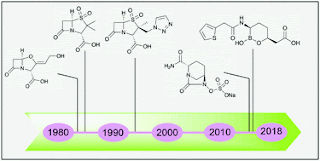Agrochemicals Market: Competitive Analysis, New Business Developments and Top Companies 2020 to 2030
The Global Agrochemicals Market size valued to USD 239.85 billion in 2019, is expected to reach USD 365.16 billion by 2030, witnessing a CAGR of 3.8%from 2020-2030.
Agrochemicals
are agricultural chemicals used to manage the agriculture ecosystem, hence
increasing the crop yield, and decreasing the generation of fungi, weeds,
insects, and such other aspects hindering the agricultural growth. Agrochemical
refers to pesticides including insecticides, herbicides, fungicides and nematicides.
It also includes synthetic fertilizers, liming and acidifying agents, hormones,
soil conditioners, and other chemical agents used in raising of livestock such
as antibiotics and hormones. Agrochemicals are either manufactured
synthetically or biologically. However, many synthetic agrochemicals are toxic
as well as their prolonged use may impose health risks and threat to the
environment. Henceforth, the use of bio-based fertilizers and pesticides is
gaining momentum in sustainable development of the global agricultural sector.
Request sample copy of this report
at: https://www.nextmsc.com/agrochemicals-market/request-sample
The
global agrochemicals market witnessed a volumetric sale of 289.07 million-tons
in 2019, that is projected to elevate up-to 402.18 million-tons by 2030, with a
CAGR of 3.0% from 2020-2030.
Market Dynamics and Trends:
With
consistently multiplying global population, there is a rising demand for
increase in crop production. Henceforth, the global agrochemicals market is on
a spur to cater the surging demand for agriculture produce. Besides, the
advantages of agrochemicals, such as high yield, reduced crop losses,
protection of crop as well as enhanced crop quality and quantity, are to boost
the agrochemicals market growth during the forecast period. However, hurdles
like rising environmental concerns due to prolonged use of synthetic chemicals,
increasing health-risks due to toxicity of such chemicals, contamination of air
water and soil due to excessive use of synthetic agrochemicals as well as
shortfall to market-players due to infringement of intellectual property
rights, are to impede the agrochemicals market growth during the forecast
period.
Ask for Inquiry at: https://www.nextmsc.com/agrochemicals-market/inquire-before-buying
Geographical Analysis:
North-America
is expected to show a considerable agrochemicals market growth, owing to
presence of large population and lack of cultivatable land. However, prevailing
advanced infrastructures, higher technological developments followed by growing
demand of agricultural commodities, are to fuel-up the growth of agrochemicals
market in future. Asia-Pacific dominated the global agrochemicals market in the
past, and is expected to grow at the highest CAGR, maintaining its dominance
throughout the forecast period. The increasing population resulting to
increasing demand of agriculture produce such as fruits, vegetables, cereals,
pulses, and others for both direct consumption and processing, are
supplementing the market growth in this region. Moreover, factors like
increasing R&D activities and cutting-edge innovations in farming
technologies as well as levitating awareness in farmers about the correct use
of agrochemicals are to create lucrative opportunities in future.
Competitive Landscape:
The
agrochemicals market, which is highly competitive, consists of various market
players. Some of the major market players include Bayer AG, Agrium Inc., BASF
SE, Dow AgroSciences LLC, Monsanto Company, E. I. du Pont Nemours and Company,
Syngenta AG, Sumitomo Chemical Co., Yara International ASA and The Mosaic Co.
among others.
Key Benefits:
·
The Agrochemicals market report provides a
quantitative analysis of the current market and estimations through 2020-2030
that assists in identifying the prevailing market opportunities to capitalize
on.
·
The study comprises a deep dive analysis of the Agrochemicals market trend including current and future trends for depicting the
prevalent investment pockets in the market.
·
The report provides detailed information related to
key drivers, restraints and opportunities and their impact on the Agrochemicals market.
·
The report incorporates competitive analysis of the
market players along with their market share in the global Agrochemicals market.
·
The study elaborates SWOT analysis and Porters Five
Forces model for the Agrochemicals market.
·
Value chain analysis in the Agrochemicals market
study provides a clear picture of the stakeholders’ roles.
About Next Move Strategy Consulting:
Next
Move Strategy Consulting is an independent and trusted third-platform market
intelligence provider, committed to deliver high quality, market research
reports that help multinational companies to triumph over their competitions
and increase industry footprint by capturing greater market share. Our research
model is a unique collaboration of primary research, secondary research, data
mining and data analytics.
We
have been servicing over 1000 customers globally that includes 90% of the
Fortune 500 companies over a decade. Our analysts are constantly tracking
various high growth markets and identifying hidden opportunities in each sector
or the industry. We provide one of the industry’s best quality syndicate as
well as custom research reports across 10 different industry verticals. We are
committed to deliver high quality research solutions in accordance to your
business needs. Our industry standard delivery solution that ranges from the
pre consultation to after-sales services, provide an excellent client
experience and ensure right strategic decision making for businesses.




Comments
Post a Comment